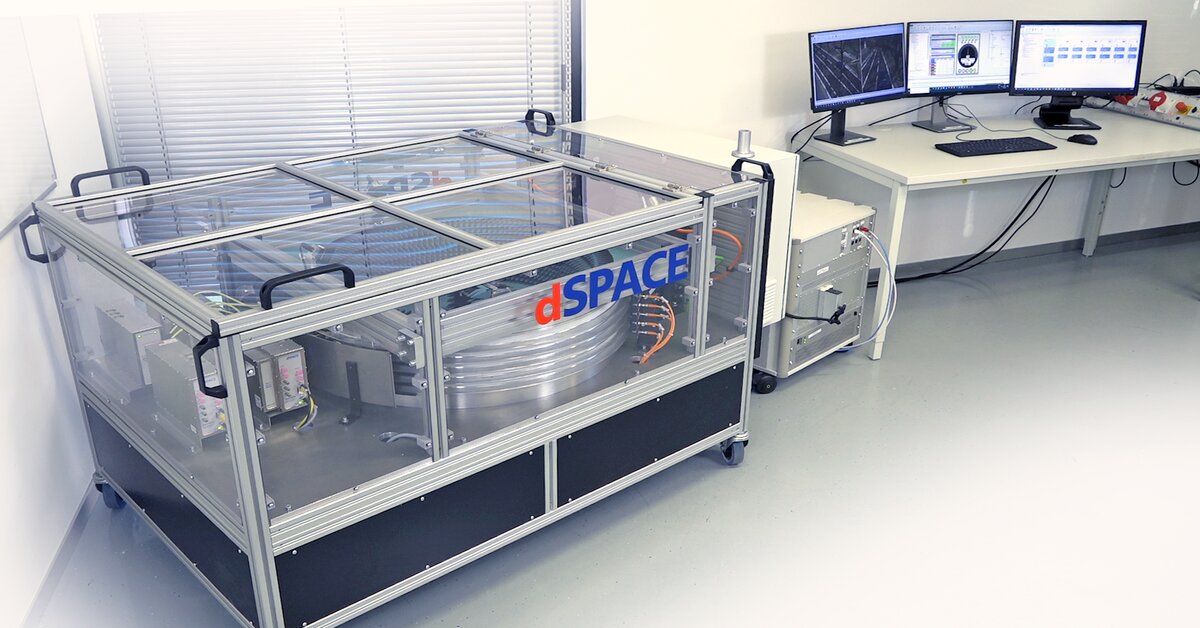In the rapidly evolving landscape of advanced driver-assistance systems (ADAS), the integrity and reliability of radar sensors are paramount. Recognising the industry’s need for highly accurate, yet practical, testing solutions outside the traditional R&D lab, dSPACE has introduced its latest innovation: the Darts Arrow. This cutting-edge radar target simulator is poised to revolutionise functional testing, particularly in the critical areas of end-of-line (EOL) manufacturing checks and periodic technical inspections (PTI).
The Darts Arrow is not merely another piece of test equipment; it represents a significant leap forward in merging high performance with user-friendly design. It has been meticulously engineered as a compact, efficient, and exceptionally easy-to-use tool. Its core function is to accurately emulate the real-world characteristics of a radar target, dynamically simulating critical parameters such as range, speed, and radar cross-section (RCS). This capability allows manufacturers and service providers to conduct thorough, reliable functional tests of radar-based ADAS systems quickly and effectively.
Peter Waeltermann, the CEO of dSPACE, highlights the revolutionary aspect of this new device: “Darts Arrow is the smallest fully fledged radar target simulator in the world and enables functional testing in the areas of end-of-line (EOL) and periodic technical inspection (PTI).” This statement underscores the product’s unique value proposition: delivering high-fidelity simulation capabilities in a footprint small enough for integration into cramped factory floors or crowded service bays. Its size is a game-changer, removing the spatial constraints that often complicate necessary EOL and PTI procedures.
From a technical standpoint, the Darts Arrow boasts specifications that meet the rigorous demands of modern automotive radar. It operates across the standard automotive frequency range of 76–81 GHz and offers a highly flexible, customizable bandwidth of up to 5 GHz. This wide operating window ensures compatibility with virtually all current and future high-resolution automotive radar sensors.
The simulator’s performance metrics are equally impressive. It can accurately simulate target distances up to 500 meters with a precision resolution step of less than $7 \text{ cm}$. Furthermore, it handles extreme speeds, simulating relative velocities of up to $\pm 700 \text{ km/h}$. This dynamic range allows testing scenarios that push ADAS limits, ensuring robust performance even in high-speed maneuvers or sudden braking situations. Flexibility is further enhanced by the system’s configurable front end, which can be set up as monostatic or bistatic, adapting to the specific architecture of the sensor being tested.
This blend of portability and performance makes the Darts Arrow an indispensable tool for validating safety-critical systems throughout a vehicle’s life cycle. Its ability to realistically simulate complex traffic scenarios under perfectly controlled, repeatable laboratory conditions is vital. By using the Darts Arrow, validation engineers can precisely detect sensor errors and verify the functionality of essential ADAS features such as emergency braking assistants, lane departure warning systems, and adaptive distance control (ACC).
Ensuring the proper functioning of these systems over the entire lifecycle of a vehicle is a growing concern for both manufacturers and regulators. Post-accident repairs, routine maintenance, or even minor changes in sensor alignment can compromise ADAS functionality. The Darts Arrow offers a swift, definitive way to confirm that a vehicle’s critical safety systems are operating as intended before it leaves the assembly line or a service center.







